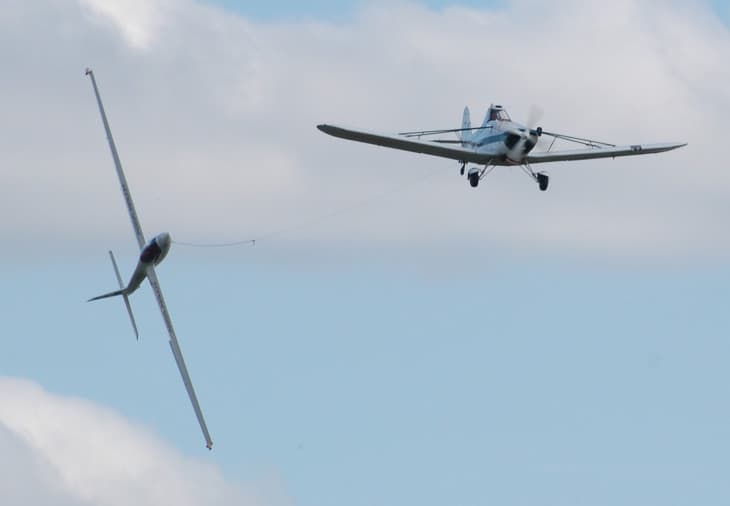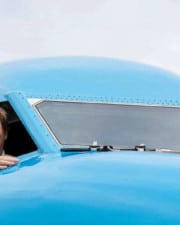Many aviation dream jobs require high logged time as pilot-in-command. If you’ve recently earned your pilot’s license and want a job in aviation, many jobs will help you start your career. These are ten low hour pilot jobs to help you get started as a pilot.
Table of Contents
If you want to become an airline pilot, you’ll want to accumulate flight hours. You could certainly rent or buy a plane to build hours, but that gets expensive fast. Pilots just starting their careers look for jobs that help them build hours, give them experience, and pay for their time.
Many more desirable jobs, such as captain of a business jet, require significant experience, flight hours, and an ATP. However, there are many fun and attractive jobs available for low-hour pilots.
Most jobs available for low-hour pilots will require at least a commercial pilot certificate. You’ll also need to be rated in the type of aircraft you’ll be flying.
A banner towing pilot will tow a giant sign, or banner, around a popular area. For example, you’ve probably seen a plane towing a banner over a busy beach on the weekend. It’s a great way for different advertisers to communicate their messages.
Banner towing planes are usually small, old tailwheel planes. You’ll want to get your tailwheel endorsement to fly these planes.
Pilots will need to complete company training, including ground and flight school. Banner pilots will learn to pick up and drop the banners. They’ll need to get good at flying low and slow and will usually fly a repetitive route. For instance, pilots might fly the same beach all day or fly around a sporting event.
Most banner towers will fly around eight hours a day. All banner towing flights are conducted under VFR rules. Banner towers will be busy when there is a busy beach, a sports game, or a special event.
Banner towing pilots usually make between $15-$50 an hour, depending on the location and company.
2. Glider Towing Pilot

Glider tow pilots fly gliders to altitude. This job requires a private pilot’s certificate and 100 hours in the same aircraft category you’ll be working in. If your tow aircraft is a taildragger, you’ll need that endorsement.
If you are looking to build hours, you just need a private pilot’s certificate. You can’t receive financial compensation as a private pilot, but many glider companies offer comped glider flights. If you have a commercial pilot’s license, you are eligible to be paid in cold, hard cash.
3. Flight Instructor

A lot of new pilots decide to become flight instructors as their first paid pilot job. There are always students looking to learn how to fly, so this job has good stability and demand.
Being a flight instructor also forces pilots to increase and reinforce their piloting skills. Flight instructors usually fly two and four-seater aircraft such as Cessna 152s, Cessna 172s, and Diamond DA40s.
Flight instructors must have a Flight Instructor Certificate. Because demand is high, flight instructors can usually quickly build flight time and flight experience. Flight instructors usually make between $15-$30 an hour.
4. Ferry Pilot
A ferry pilot moves an empty aircraft from one location to another. For example, a ferry pilot might be moving a small aircraft such as a Diamond DA40 to a new home base.
Ferry pilots might work full-time for a busy aircraft sales dealership. Sales offices often need help delivering aircraft to new owners or new regions. Ferry pilots might pick up brand new aircraft from the factory and deliver them to the regional sales office.
You’ll need to be rated in the type of aircraft you’ll be ferrying. The salary is usually $15-$30 an hour.
5. Skydive Jump Pilot

This job requires 500 flight hours. Skydive jump pilots carry passengers to altitude, help jumpers exit the aircraft safely, and fly back to the airport empty. Skydive jump pilots might fly aircraft as small as a Cessna 182 with its door removed to a twin-turboprop such as a DeHavilland Twin Otter.
Being a skydive jump pilot is a great way to build hours. Pilots often fly all day. However, it can be a challenging job. Pilots have to manage changing weight and balance as jumpers move around the aircraft and jump out. In addition, pilots must calculate the drop location based on the landing area and the current wind condition.
Jump pilots usually make around $30 an hour.
6. Sightseeing Pilot
Sightseeing pilots take visitors on sightseeing tours. For example, you might fly tourists over a beautiful beach, the Grand Canyon, or city skyscrapers. In addition to flying, you’ll also point out landmarks and discuss the history of the area.
Sightseeing pilots make between $15-$30 an hour. Pilots might fly aircraft as small as a Cessna 172 or larger aircraft such as a Cessna Caravan.
7. Aerial Survey Pilot
Aerial survey pilots fly survey missions. Photography survey flights are common and needed for many different businesses. For example, tourism officials may want photos of the beach or other local landmarks. In addition, real estate developments may be aerial photography of the building site before, during, and after the project.
Some survey flights involve counting or watching for wildlife. For example, you might take a group of scientists to look for a specific type of bird, nesting site, or head along the shore to search for endangered whales. Survey flights are done in varied aircraft, such as a Cessna 172 or a Cessna Caravan. Pilots will need a commercial certificate and can expect to make around $30 an hour.
8. Pipeline and Powerline Patrol Pilot
A pipeline and powerline patrol pilot flies along a specified route to monitor essential infrastructure. This job usually requires 400 hours of flight time. Pilots will have to be comfortable flying at low altitudes and watching for issues. It can be tedious, but flying a pipeline is a great way to build hours. Pay is usually between $15-$30 an hour.
9. Part 135 Second-In-Command (SIC)

Most Part 135 operations do not require the first officers to have an Airline Transport Pilot (ATP) certificate. Part 135 operators carry passengers or cargo for hire–but they are not airline operators. Part 135 operators run a variety of aircraft, from cargo planes to business jets. For example, you might be second in command of a Citation 680, Gulfstream GIV, Lear 60, or similar business jet. This job gives pilots access to newer, more attractive aircraft and is a great foot-in-the-door if you want to be in business aviation. Second-in-command pilots usually make between $30,000 to $100,000 a year.
10. Sales Pilot
If you are an aircraft salesperson and have 200 flight hours, you can demo aircraft for sale as part of your job. Aircraft salespeople just need a private pilot’s license. If you like selling aircraft, this is a great job. It’s not a great way to build flight hours because you won’t be demoing aircraft 8 hours a day. The salary is usually commission-dependent, so your salary will depend on what type of aircraft you sell and how many aircraft you sell. The average salary is between $30,000 – $85,000.
Related Posts













